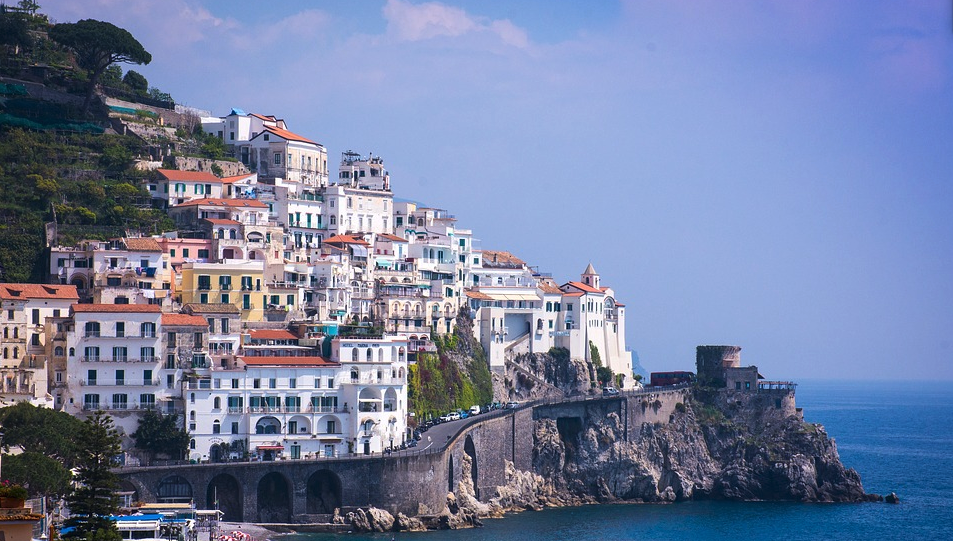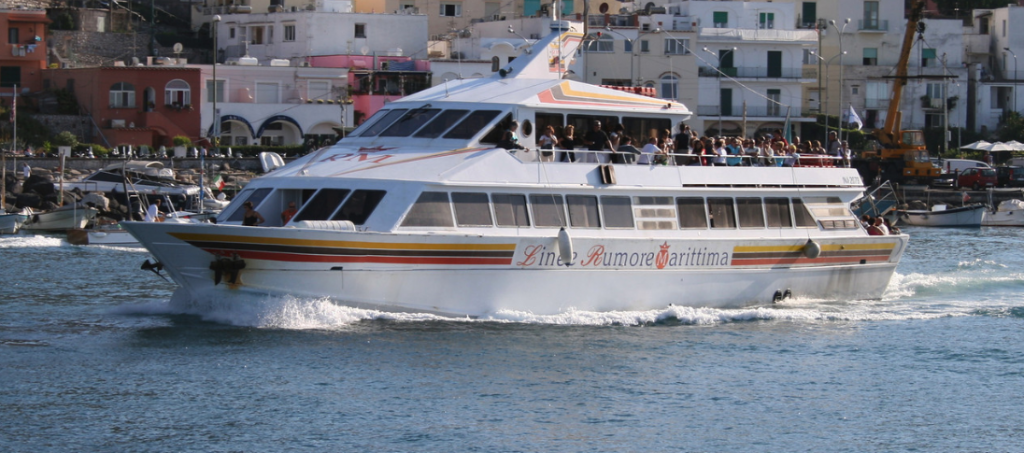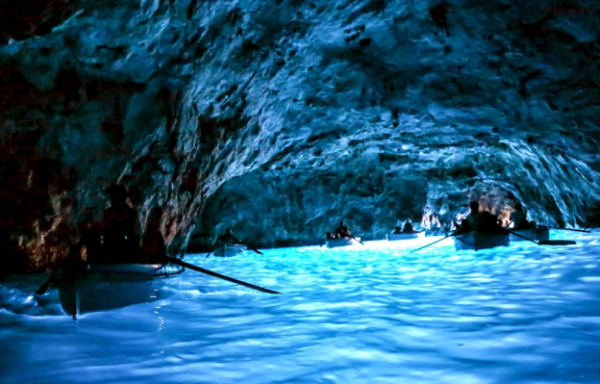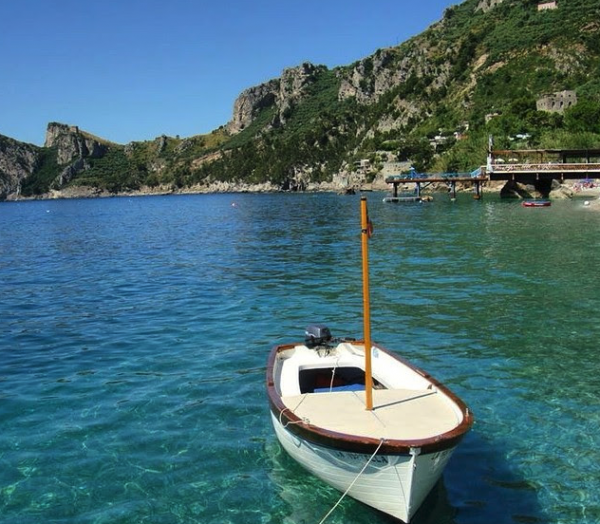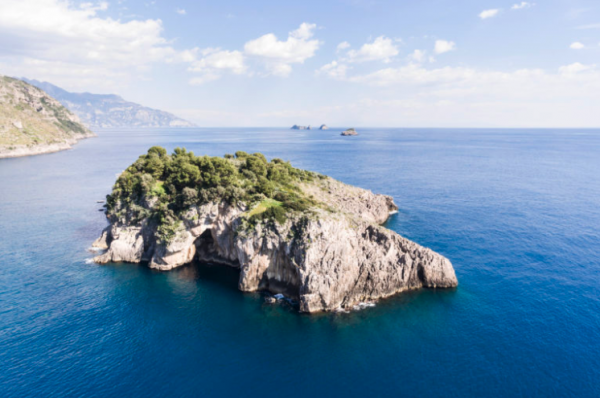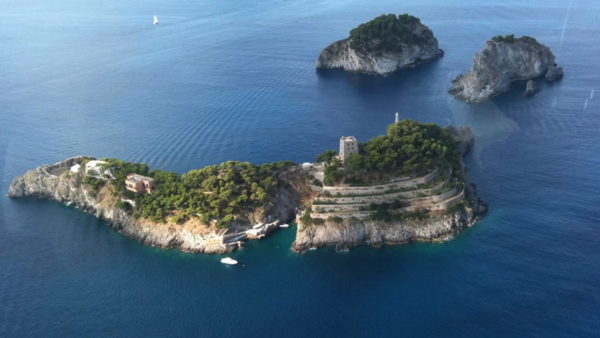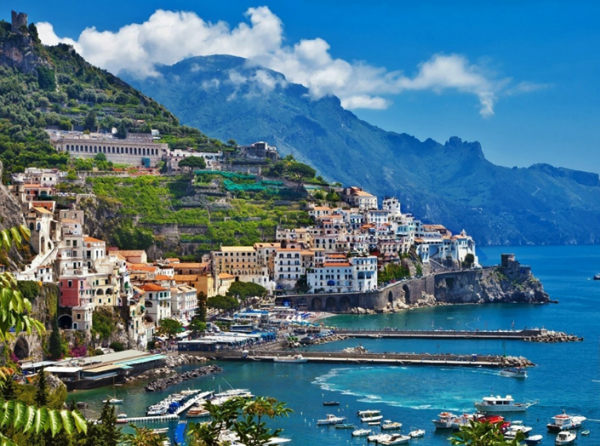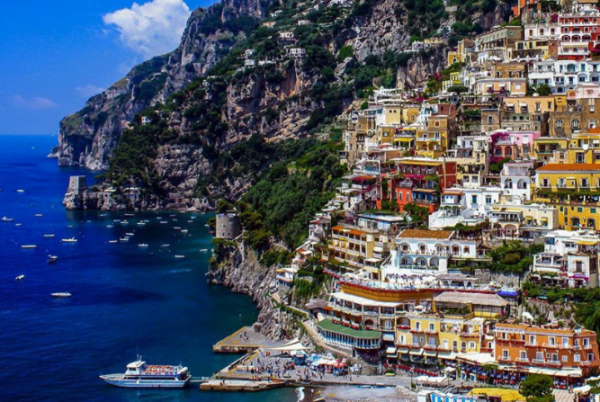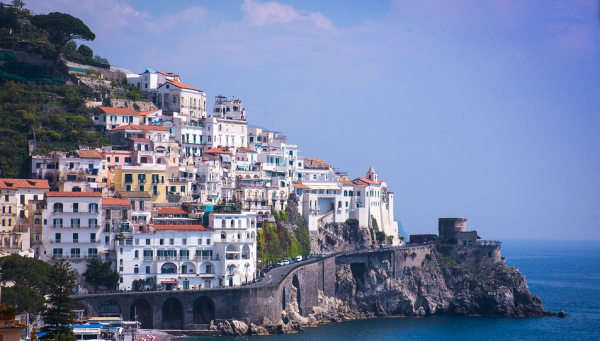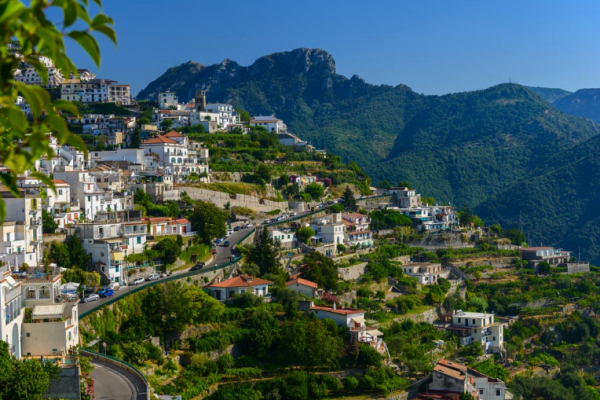Amalfi Coast
South from chaotic and fascinating Naples, the vertiginous and craggy Amalfi Coast with its three islands Capri, Ischia and Procida has been a magnet for visitors since Roman times.
The Amalfi Coast is one of Italy’s most memorable and beautiful destinations. Mountains plunge into the sea in a vertical scene of precipitous crags, cliff-clinging abodes and verdant woodland.
With its picturesque towns nestling on steep cliffs, the coast of Amalfi this 40 kilometer long strip along the Italian coast is simply stunning and very different from what I have seen so far on my trip through Europe.
It’s a popular holiday destination, with sheer cliffs and a rugged shoreline dotted with small beaches and pastel-colored fishing villages. The coastal road between the port city of Salerno and clifftop Sorrento winds past grand villas, terraced vineyards and cliffside lemon groves.
Transport & Route
A network of ferries connects the coastal towns along the Amalfi Coast with Salerno, Sorrento and Capri. Connections to Naples, Ischia and Procida can be made via Sorrento or Capri.
The “Ischia Princess”, which I took, travels to the Amalfi Coast every Thursday and Sunday between April 15th and October 30th. Departure times and locations are Forio 8:00 AM, Lacquer Ameno 8:10AM, Casamicciola 8:20AM and Ischia Porto 8:40 AM.
This ship route took me from Ischia to Capri, Punta Campanella and Li Galli islands to the most famous stops Amalfi, Sorrento, Positano and Ravello.
Explore & Discover
Oh wow, there is so much to discover along the 40 kilometer long coastal line along the southern edge of Italy’s Sorrentine Peninsula.
But be aware: In the Summer months you should see this landscape from a ship only, because the area is overrun by toursist from all over the world. Americans from cruise liners, Japanese, Russians and German pensioner groups, who come by bus from Naples. You can barely put one foot in front of the other without having a selfie stick in front of your nose.
According to locals, the best time to travel to Amalfi Coast if you want to have a more authentic visit rather than just a tourist overload are October through January.
Capri & Blue Grotto
This island is famous for its rugged landscape, upscale hotels and shopping opportunitites, from designer fashions to limoncello and handmade leather sandals. One of its best-known natural sites is the Blue Grotto, a dark cavern where the sea glows electric blue.
The whitewashed core of Capri town is lovely, with a path leading through terraced countryside to a Roman villa. Definitely a must see on this trip.
Punta Campanella
Shortly after Capri you will pass the nature reserve Punta Campanella. A promontory made of lime, which represents the border between the Gulf of Naples and the Gulf of Sorrento.
Somewhere in this 1228 hectare area, there is a temple, which is said to have been built in honor of the goddess Athena of Odysseus. Athena was the goddess of the Mariners – but only for the Greek who came from their homeland towards Capri and Sicily.
Isola d’Isca
In the middle of the Gulf of Salerno, just 100 meters from the Amalfi Coast, you can find the oval island of Isca, measuring only 270 by 130 meters.
The Neapolitan actor and playwriter Eduardo de Filippo acquired the island in 1948 and built a summer residence there to work in absolute quietness. After his death, the island passed to his son Luca and still remains in the family.
Li Galli Islands
In front of Positano, the group of islands “Li Galli” rises from the sea. According to legend, the first inhabitants of the islands were the three sirens Parthenope, Leucosia and Liga, which is why Li Galli is also called Sirenuse.
In 1924, the Russian choreographer Léonide Massine bought the three intertwining islands, which have the shape of a dolphin in aerial view.
Sorrento
A grand dame of local tourist towns, Sorrento sits pretty on a cliff gazing out at Vesuvius, and there’s a charming fishing village down below. Perched atop cliffs that separate the town from its busy marinas, it’s known for sweeping water views and Piazza Tasso, a cafe-lined square.
The historic center is a warren of narrow alleys that’s home to the Chiesa di San Francesco, a 14th-century church with a tranquil cloister, which is worth a visit.
Positano
It’s a well-known holiday destination with a pebble beachfront and steep, narrow streets lined with boutiques and cafes. What looked like a pastel-colored idyll nestled in rocks from the water, turns out to be a tourist-flooded place.
Of all the tumbling coastal towns in Italy, Positano might be the most tourist overrun city. Nearly 4,000 people live here – ten times as many in the summer months. The small fishing village was used by American soldiers as a health resort after the Second World War, a little later also English and German discovered Positano.
So the former small fishing village was transformed into a chic seaside resort in time lapse. Nowadays, the streets, side streets and the numerous stairs are hopelessly crowded.
Ravello
A hilltop garden paradise, Ravello is famous for its music festival and incomparably swish hotels. The 13th-century, Moorish-style Villa Rufolo offers far-reaching views from its terraced gardens, and hosts indoor and outdoor concerts during the popular summertime Ravello Festival.
For tips on places to stay with your motorhome while you are in the area, check out my review on Italian campsites.



